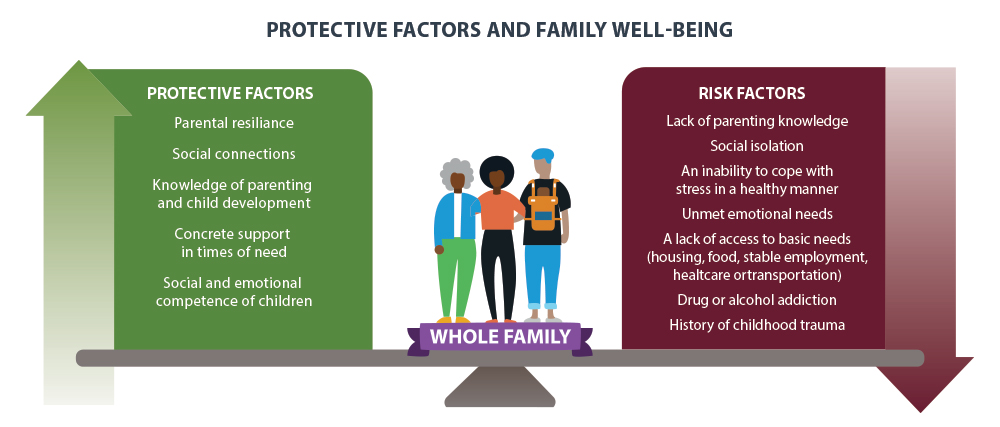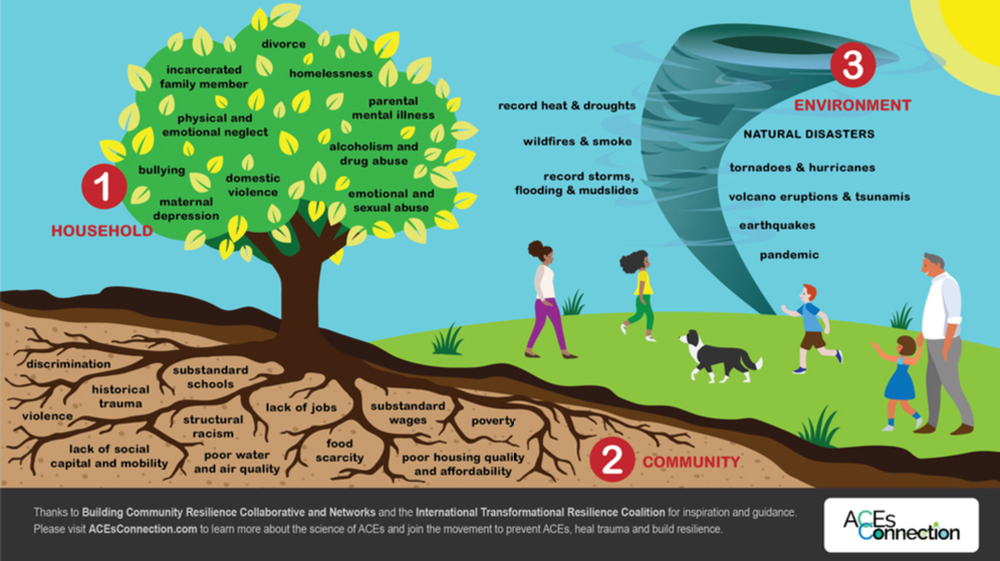Why do Child Abuse and Neglect Persist?
Child abuse and neglect are not caused by a single factor, but by multiple factors related to the individual, family, community, and society at large.
Environments that are violent, lack accessible and effective community resources, and are disproportionately affected by poverty or unemployment are stressors that may lead to child abuse and neglect. Additionally, cultural norms and beliefs may prevent caregivers from reaching out for help, prevent community members from offering help, and impair overall caregiver abilities to create safe, stable, nurturing relationships and environments. Parent and caregiver risk-factors that may contribute to child abuse and neglect include: lack of parenting knowledge, social isolation, an inability to cope with stress in a healthy manner, unmet emotional needs, a lack of access to basic needs (such as housing, food, stable employment, healthcare or transportation), drug or alcohol addiction, and history of childhood trauma.
Boosting the protective factors in a family will provide the safe, stable, and nurturing home and relationships every child needs and deserves to thrive.
Children exposed to abuse and other forms of trauma are at an increased risk of experiencing chronic diseases, mental health challenges, and other adversities during adulthood. Child abuse impacts graduation rates, incarceration rates, job productivity, and more.
A newer term, "Adverse Community Experiences" (ACEs), which may include lack of affordable and safe housing, community violence, systemic discrimination, and limited access to social and economic mobility, creates additional conditions for vulnerability to child abuse or neglect. Additionally, the environments in which children, youth, and families live, work, and play can contribute to adverse experiences that impact families. These three realms (household, community, and environment experiences) intertwine throughout people’s lives and impact families, communities, and systems.

